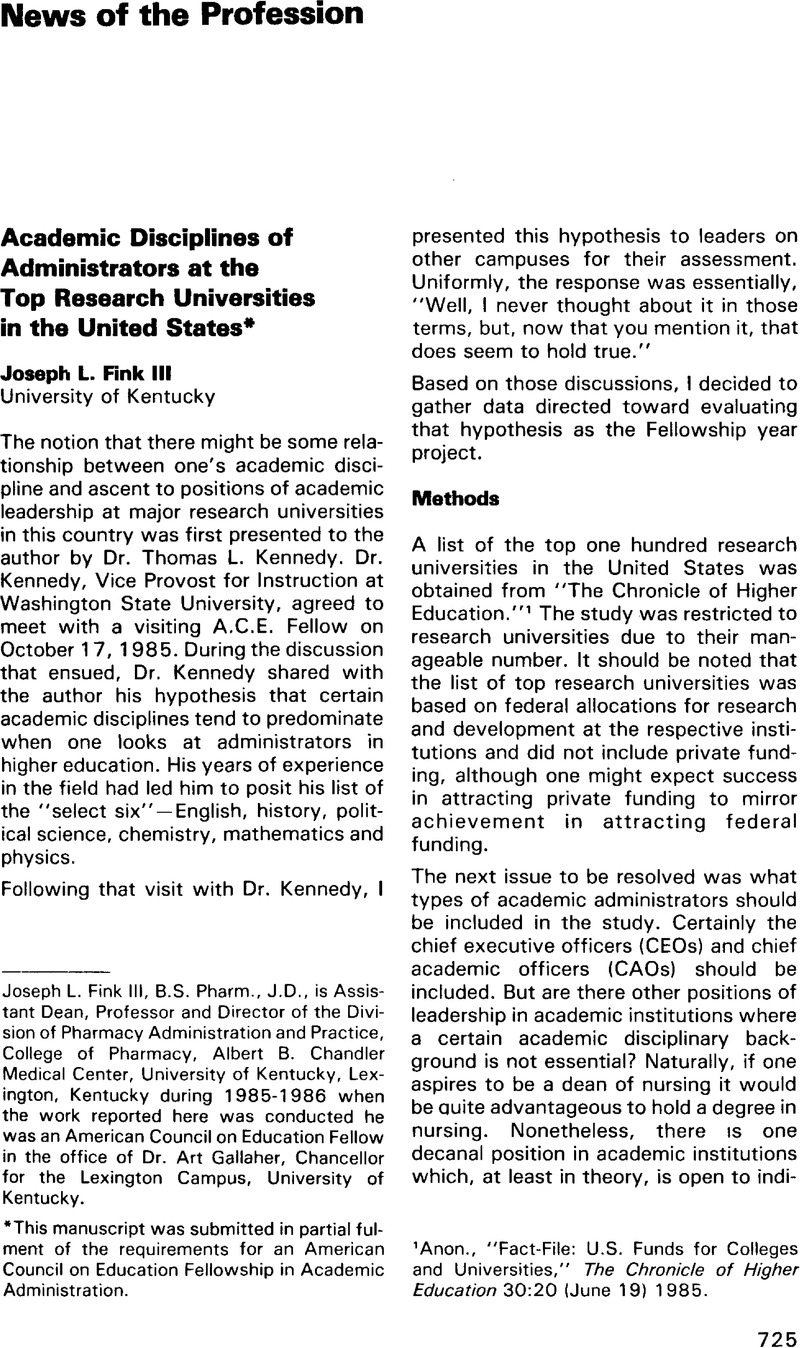No CrossRef data available.
Published online by Cambridge University Press: 21 November 2022

This manuscript was submitted in partial fulment of the requirements for an American Council on Education Fellowship in Academic Administration.
1 Anon., “Fact-File: U.S. Funds for Colleges and Universities,” The Chronicle of Higher Education 30:20 (June 19) 1985.
2 Jones, D. P. and Drews, T. H., A Manual for Budgeting and Accounting for Manpower Resources in Postsecondary Education, Boulder, CO: Western Interstate Commission for Higher Education (1977).Google Scholar
3 Torregrosa, C. H. (ed.), 1986 Higher Education Directory, Washington, DC: Higher Education Publications, Inc. (1986).Google Scholar
4 Anon., The Council of Graduate Schools in the United States 1985–86 Directory, Washington, DC: The Council of Graduate Schools in the United States (1985).
5 Anon., “Fact-File: Who Faculty Members Are, and What They Think,” The Chronicle of Higher Education 31:25 (December 18) 1985.
6 Walker, D., “Scientists Are Replacing Humanists as Top Administrators at British Universities,” The Chronicle of Higher Education 31:35 (November 20) 1985.Google Scholar
7 Ibid.
8 Watkins, B. T., “Typical Chief Academic Officer: He's 50, Earns $61,000, Has Been on the Job 5 Years, and Wants to Be a President,” The Chronicle of Higher Education 31:21 (November 27) 1985.Google Scholar